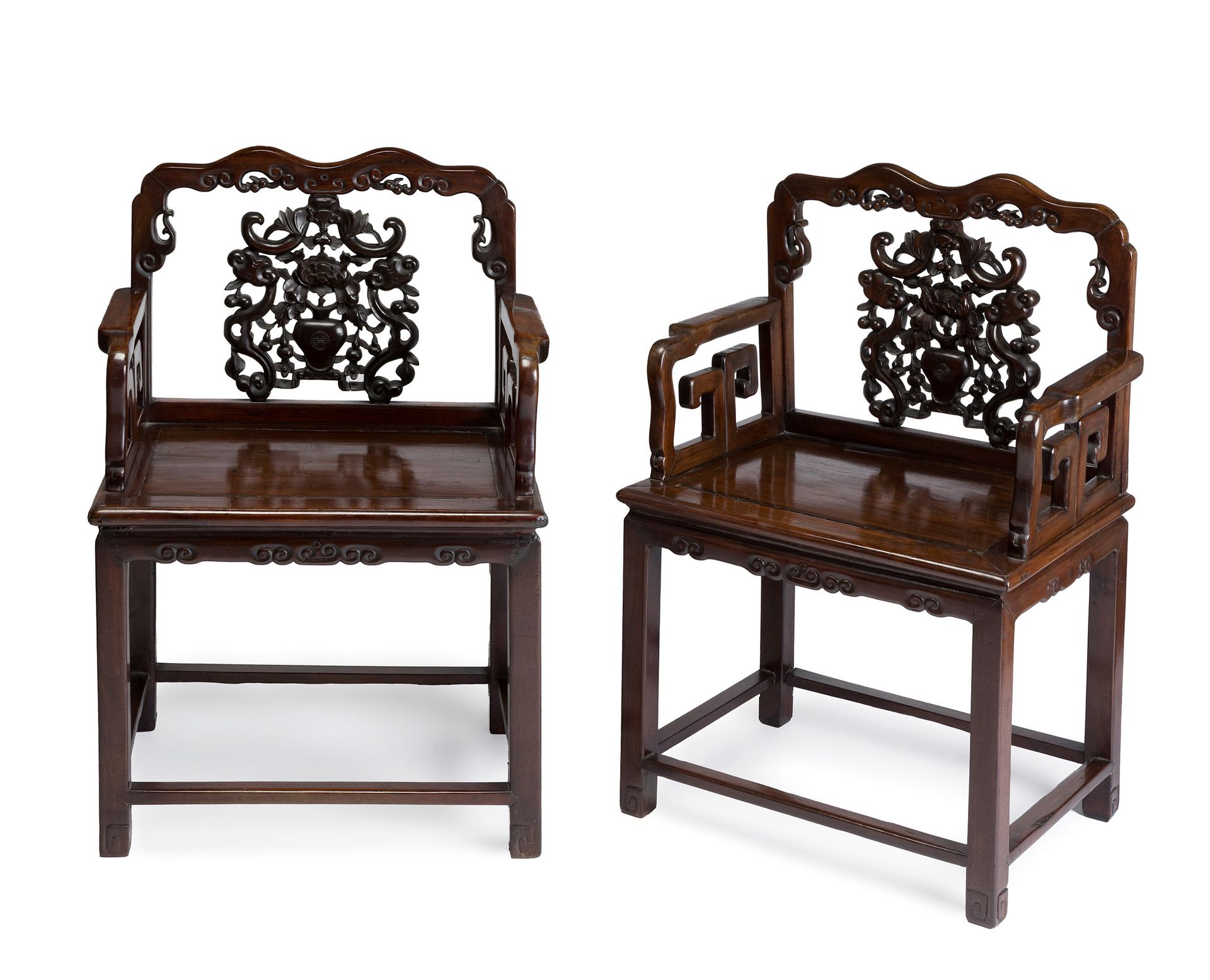Description
Pair of throne chairs. China, late Qing dynasty, 19th century Carved hongmu (sourwood) or Huanghuali (rosewood) wood. Very slight flaws in the wood. Cracks in the seats. Measurements: 97 x 64 x 47 cm. Pair of antique Chinese throne armchairs possibly made of Huanghuali or hongmu rosewood, 19th century. The back is decorated with hand-carved vegetal and geometric motifs, in a combination of intricate swirling forms and the more square geometric structure of the chairs. Chairs first appeared in China in the form of portable chairs used by commanders on the battlefield. Their use spread rapidly in domestic life, used by all classes and sectors of society. By the early Ming dynasty, various styles had been developed and little changed for several hundred years. In a society as hierarchical as China, different styles of chair were associated with different ranks of society. No early references to hongmu have yet been discovered; however, the South Chinese equivalent term 'suanzhi' appears during the Middle Qing period; its literal meaning, 'sour wood' describes the pungent odour emitted when worked. Most of the dark furniture of the Qing period is made of hongmu.
27
Pair of throne chairs. China, late Qing dynasty, 19th century Carved hongmu (sourwood) or Huanghuali (rosewood) wood. Very slight flaws in the wood. Cracks in the seats. Measurements: 97 x 64 x 47 cm. Pair of antique Chinese throne armchairs possibly made of Huanghuali or hongmu rosewood, 19th century. The back is decorated with hand-carved vegetal and geometric motifs, in a combination of intricate swirling forms and the more square geometric structure of the chairs. Chairs first appeared in China in the form of portable chairs used by commanders on the battlefield. Their use spread rapidly in domestic life, used by all classes and sectors of society. By the early Ming dynasty, various styles had been developed and little changed for several hundred years. In a society as hierarchical as China, different styles of chair were associated with different ranks of society. No early references to hongmu have yet been discovered; however, the South Chinese equivalent term 'suanzhi' appears during the Middle Qing period; its literal meaning, 'sour wood' describes the pungent odour emitted when worked. Most of the dark furniture of the Qing period is made of hongmu.
